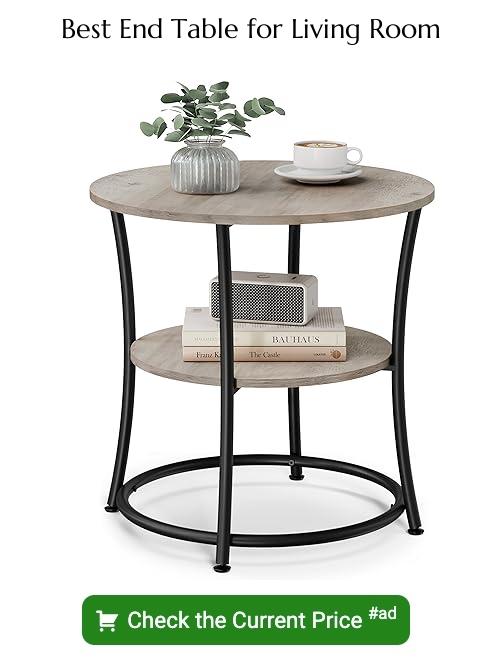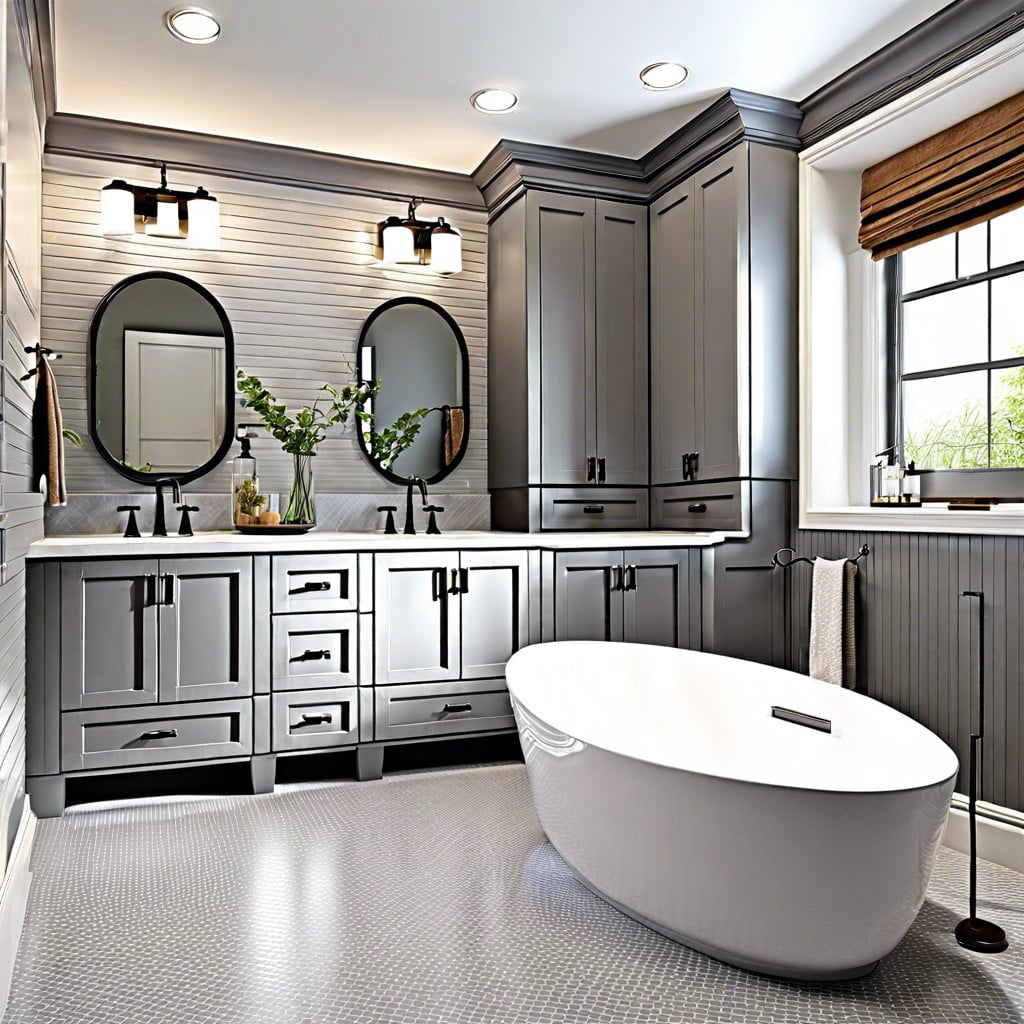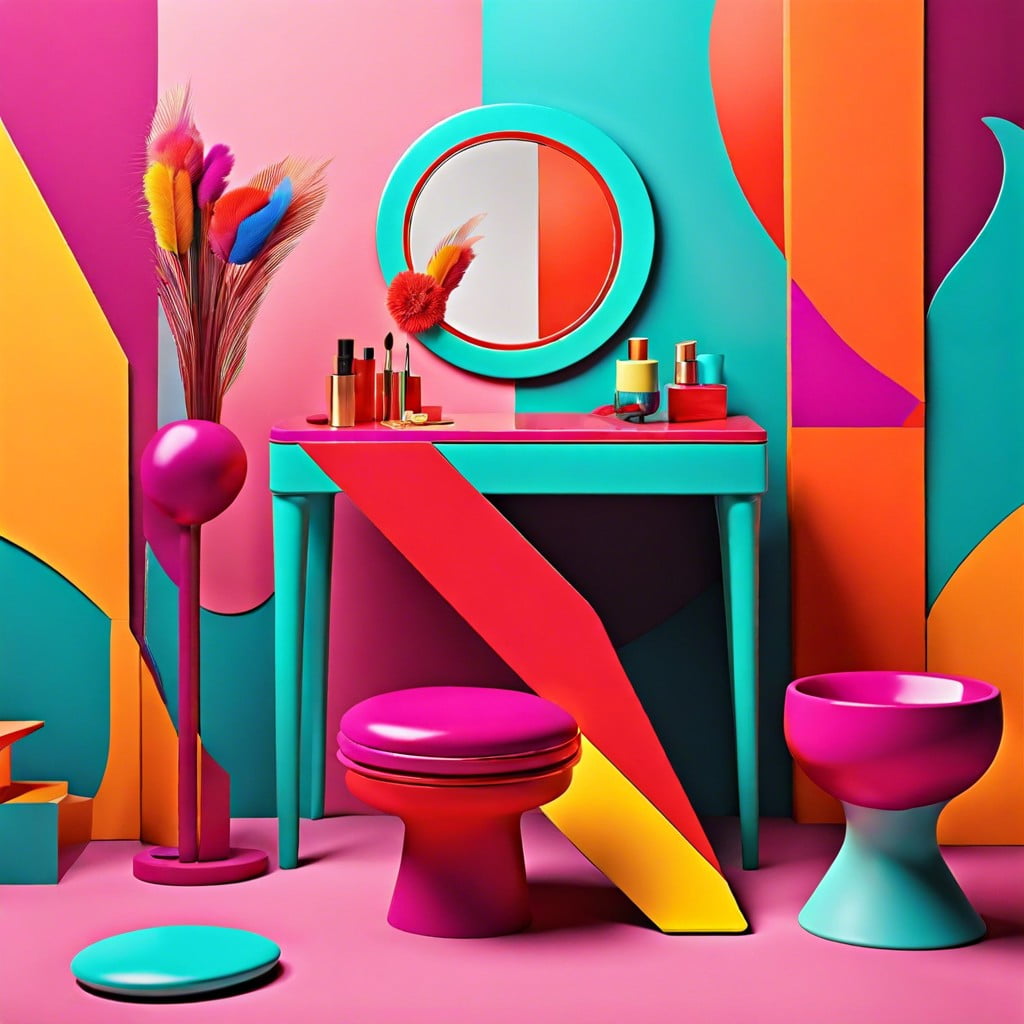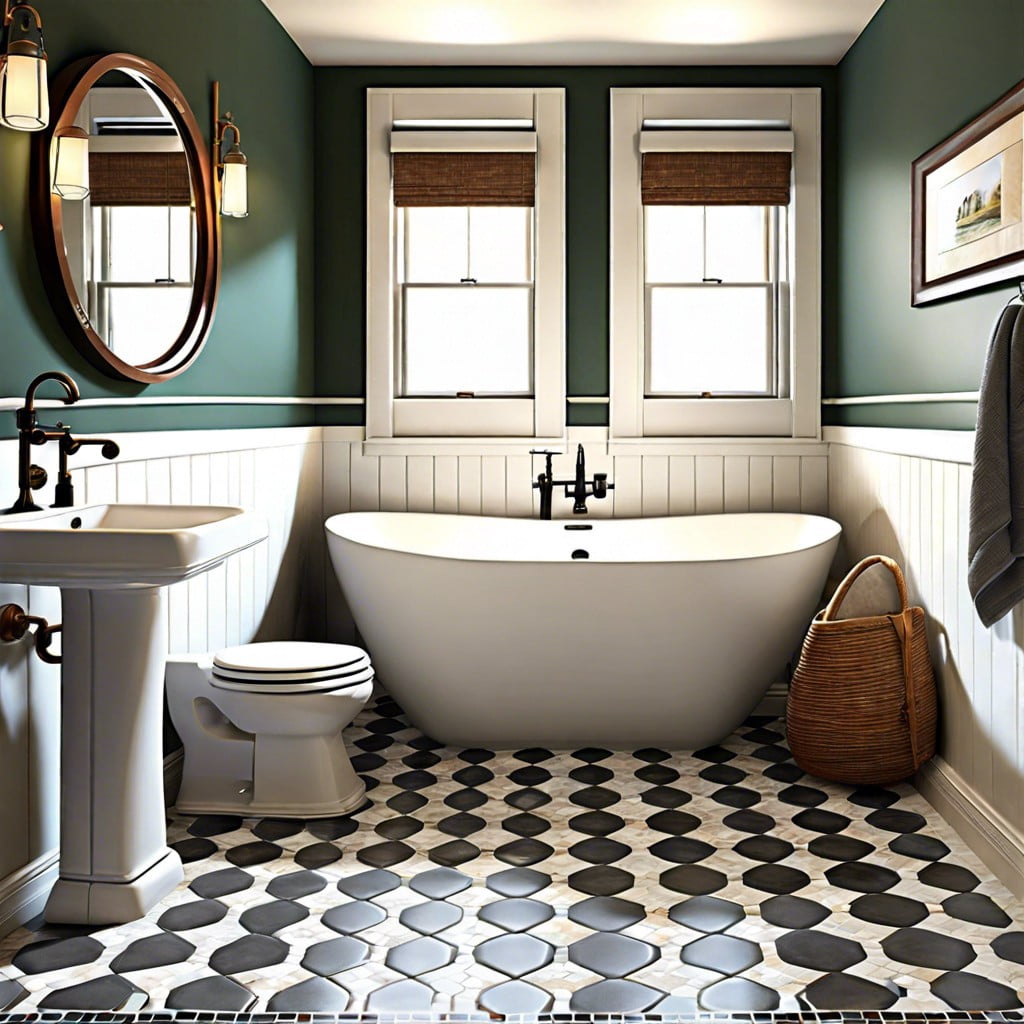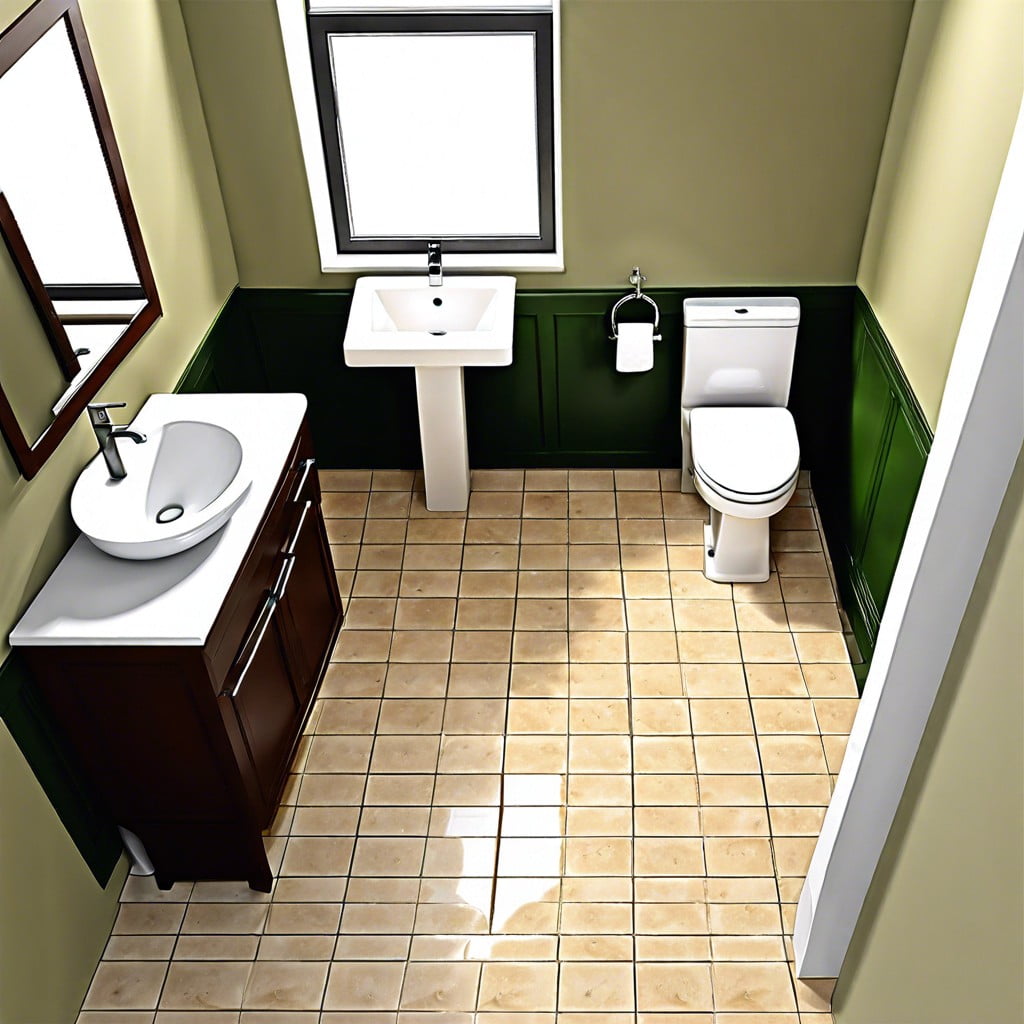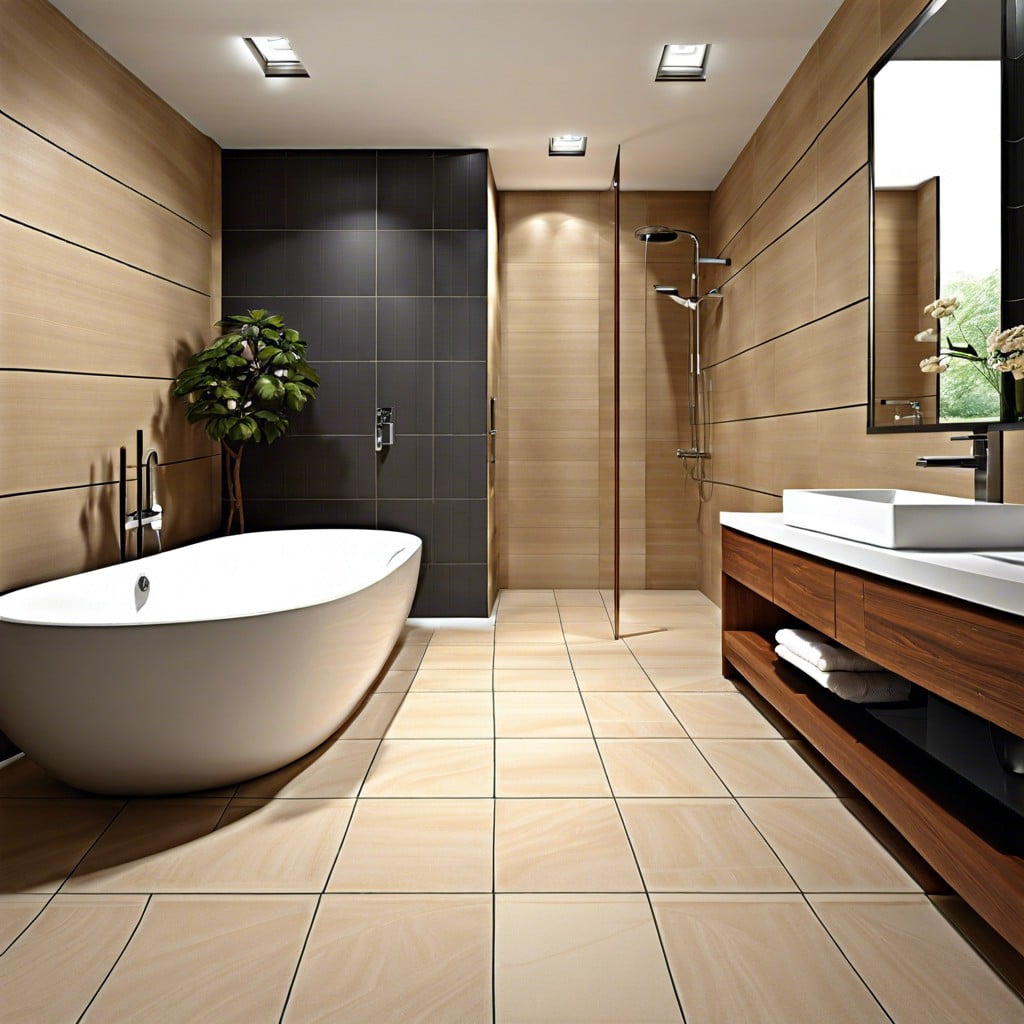Last updated on
Discover why understanding end table dimensions is crucial because it helps create balance and harmony in any living space.
Selecting the perfect end table dimensions can elevate your living space from functional to fabulous. Nail the height to match your sofa arm for seamless aesthetics and functionality, ranging from 22 to 30 inches. Width and depth, at 16-22 inches and 15-20 inches respectively, offer enough surface area without imposing on your space, and an ideal 18-inch placement from your sofa ensures practical reach and movement flow. Whether for balancing a lamp, housing a coffee cup, or simply adding style, understanding these specifics promises a harmonious living area. Dive into the details as we guide you through optimizing end table dimensions for a polished and practical living environment.
Key takeaways:
- End table height: 22-30 inches, align with sofa arm.
- End table width: 16-22 inches, ample space without overwhelming.
- End table depth: 15-20 inches, consider walkway clearance.
- End table placement: 18 inches from sofa, align with nearby surfaces.
- Functionality: Consider use, balance, and available space.
Standard Size of an End Table
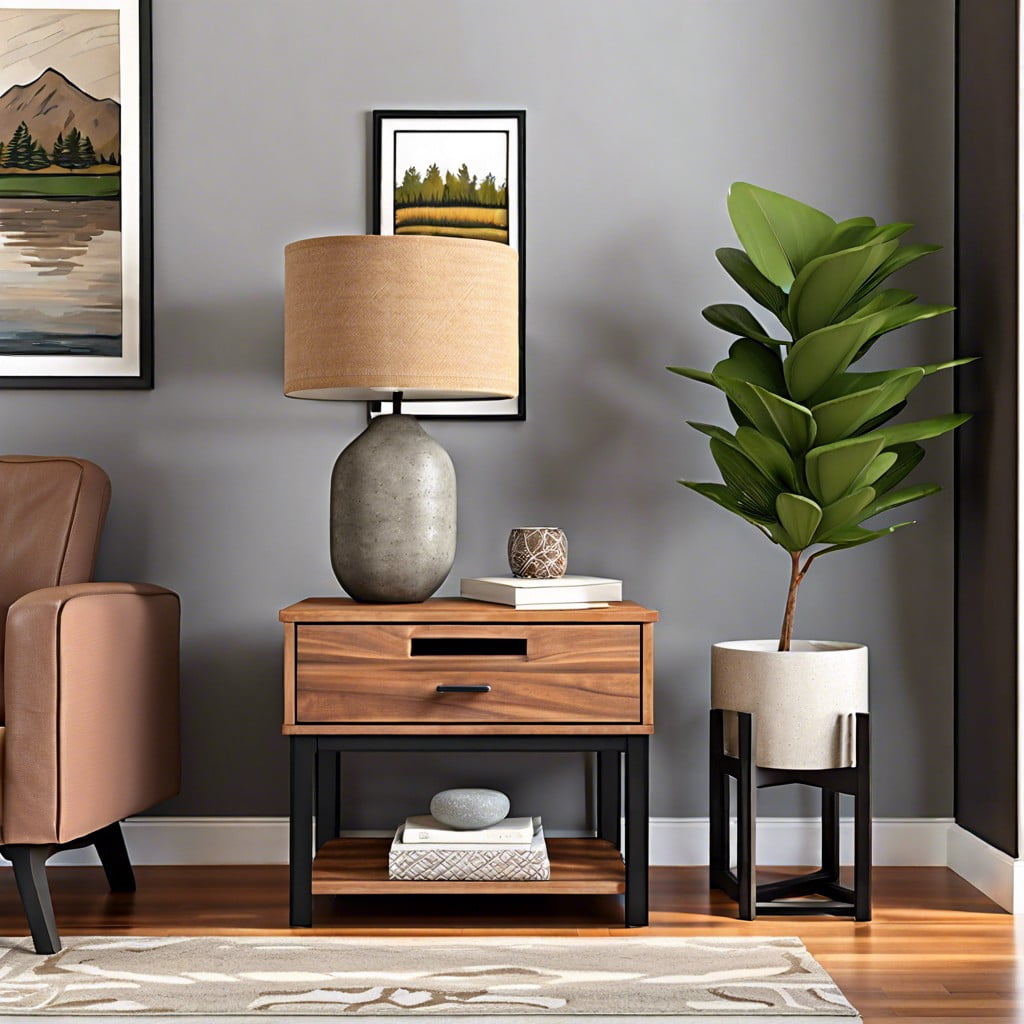
Selecting the ideal end table size is essential for both aesthetics and functionality. Typically, the height should align with the top of the sofa arm, ranging from 22 to 30 inches, ensuring easy reach. A width between 16 to 22 inches provides ample space for everyday items like books and cups without overwhelming the room. The depth, usually matching the width, allows for a balanced look while maintaining walkway clearance. Remember, scale and proportion are keys to choosing an end table that complements your living space.
End Table Height
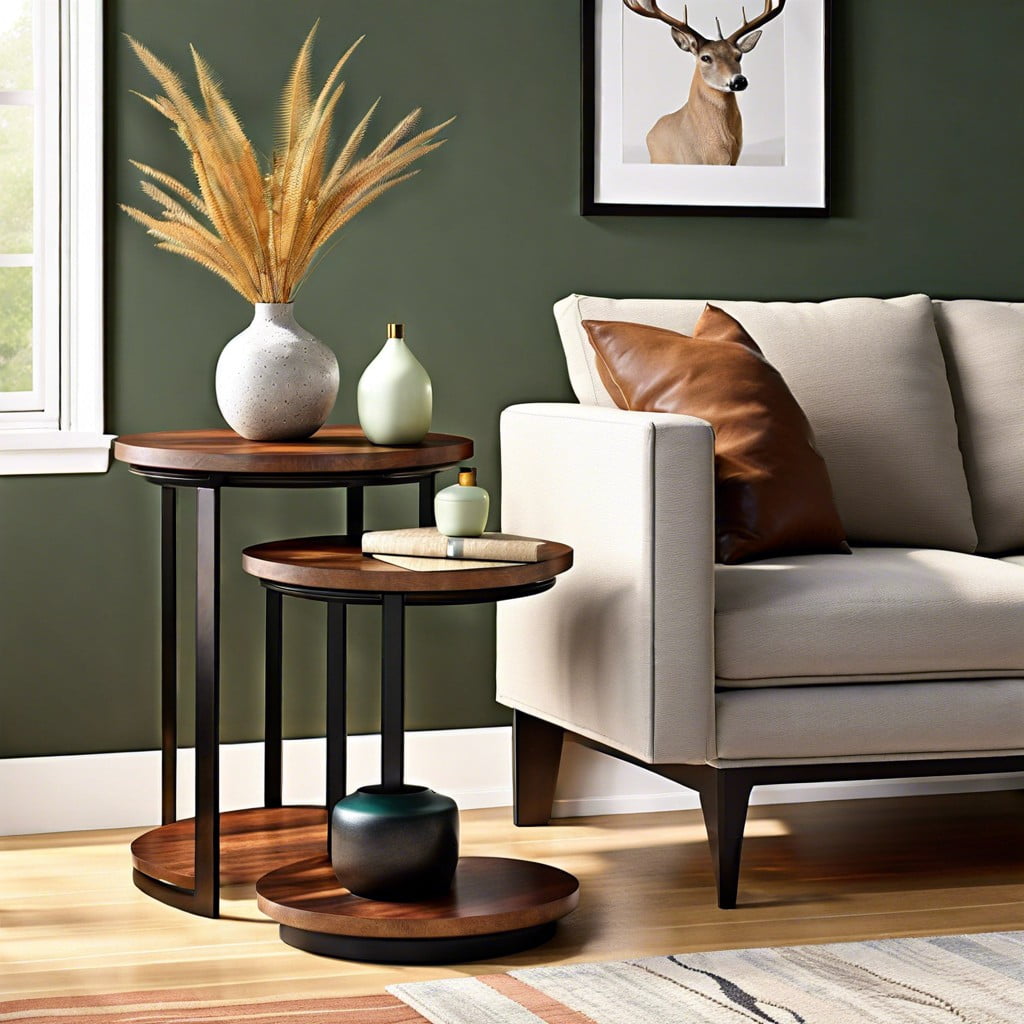
Ideally, align the tabletop with the arm of the couch for seamless aesthetics and practical reach. Commonly, this equates to a height of 22-30 inches, depending on your sofa’s dimensions.
Consider a slightly lower piece if opting for a modern, lounge-style look, typically sinking beneath the sofa arm. In settings lacking a couch, aim for proportionality with nearby furniture to maintain visual harmony.
Remember comfort; an excessively high or low table can disrupt relaxation and the flow of conversation.
End Table Width
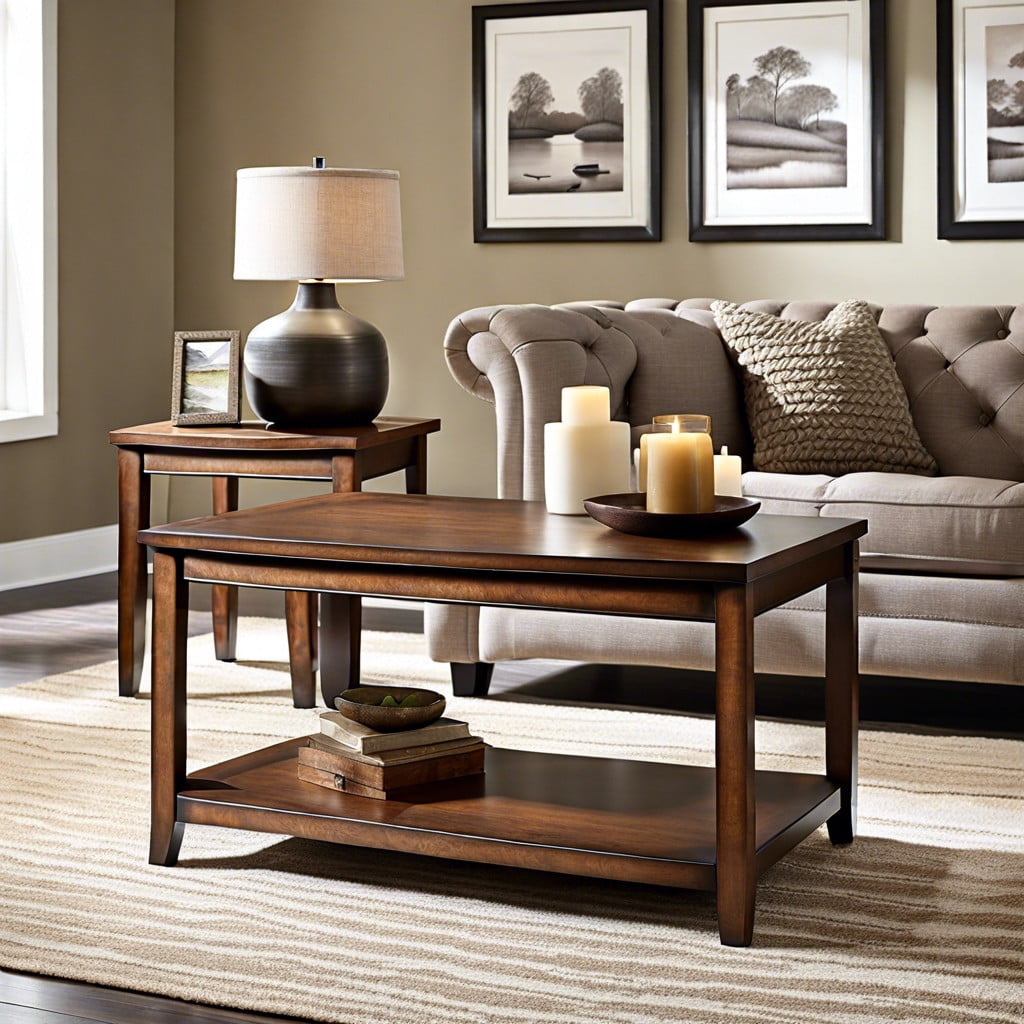
Selecting the appropriate width for your end table is essential for both aesthetics and function. Aim for a table measuring between 16 to 22 inches wide, which offers a generous surface without overwhelming the space.
This range ensures ample room for essentials such as lamps, books, and beverages. However, narrower options are available for tighter spaces, and if your living area accommodates, broader pieces can be considered.
The key is to balance the proportions of your end table with the surrounding furniture to create a harmonious look while maintaining clear pathways for traffic around the room.
End Table Depth
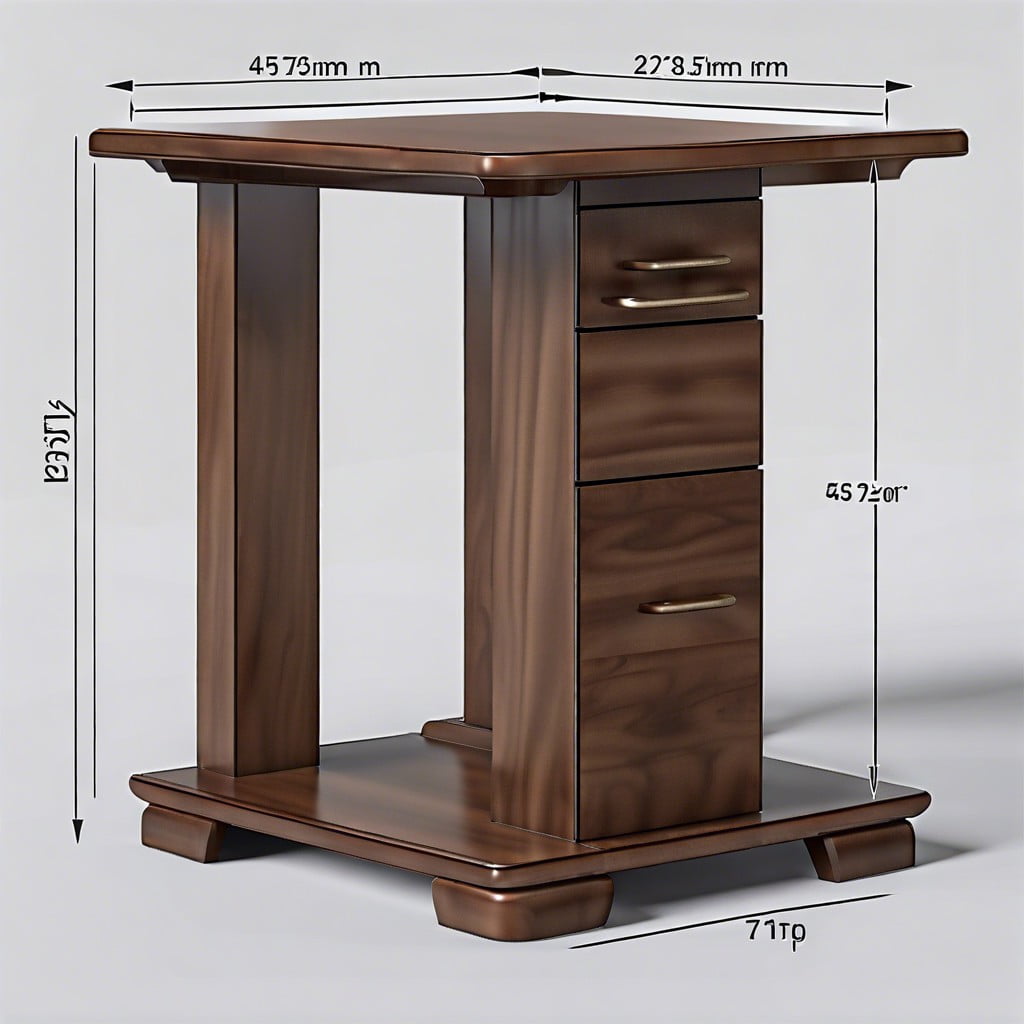
When selecting an end table, depth is a key consideration for both aesthetics and function. A typical range is 15 to 20 inches. If you plan to place it between a sofa and a wall, measure the available space to ensure a good fit without overcrowding. For smaller rooms, opt for shallower tables to maintain an open feel. Remember, deeper tables offer more surface for items but may protrude into walkways, so balance is crucial. Always align the depth with your intended use and the proportion of adjacent furniture to create harmony in your space.
End Table Placement
When choosing the perfect spot for your end table, consider both function and flow. A common guideline is leaving about 18 inches between the end table and sofa edges for easy access to drinks or remotes.
Ensure that there’s clear space for foot traffic – you shouldn’t have to contort around furniture to move through the room. If your end table has drawers or doors, there should be ample room to open them without obstruction.
Keeping it adjacent to the arm of the couch or next to a chair offers the most convenience for the users. For a cohesive look, aligning the end table with other nearby surfaces like the height of the arm of your seating or the bottom of a window sill can create visual symmetry.
Functionality
When selecting the dimensions of an end table, consider how you plan to use it. A table meant for holding a table lamp should have a larger surface to accommodate the lamp’s base and provide stability. For those needing space to place a book or a drink, a smaller table might suffice.
If the end table is to be used for storage, like stowing away magazines or remote controls, look for one with drawers or shelves. If it will serve as a decorative piece to display photos or collectibles, surface area becomes less critical, and the focus may shift to aesthetics.
Lastly, keep in mind the available space around your seating—end tables shouldn’t obstruct movement or crowd your living area.
Should End Tables Be Taller Than Couch?
Selecting the ideal height for end tables involves striking a balance between aesthetics and functionality.
- Ergonomics suggest end tables should be equal to or slightly lower than your couch’s arm height, facilitating comfortable reach for items like drinks or remotes.
- Lower tables also prevent tipping hazards, creating a safer environment when reaching across.
- However, a table slightly taller than the couch arm can serve as a bold statement piece and offers a more accessible surface for those seated.
- Regardless of style, ensure the height difference does not exceed two inches above the arm to maintain visual harmony and practicality.
Visual Appeal
Creating a harmonious visual balance is crucial. The right size for your end table can be the linchpin to achieving this effect:
- Scale with other furniture: Ensure the table is proportional to surrounding pieces, like armchairs or sofas, to avoid disrupting the aesthetic flow.
- Room to Breathe: Leave adequate space around the table to maintain an uncluttered look and seamless traffic flow.
- Accent Features: Use the table’s surface to display accents that complement the room’s color scheme and texture, like a vase or lamp.
Remember, it’s not just about dimensions but how they interplay with the room’s overall design.
FAQ
What is the standard size of an end table?
The standard end table typically measures between 18-24 inches high, and 16-22 inches wide.
What is the best height for an end table?
The ideal height for an end table should be within two inches of a sofa’s arm height, for instance, if the sofa’s arm is 22" tall, then the right end table can range from 20" – 24" tall; however, if it’s difficult to determine, opt for a shorter rather than taller end table.
Should an end table be the same depth as the sofa?
An end table should be the same depth as the sofa it’s placed next to, or smaller, but it should never exceed the sofa’s depth.
Can end tables be different sizes?
Yes, end tables can indeed be different sizes, often displayed in occasional table sets that include larger ‘lamp tables’.
How can one determine the appropriate end table width for their living room?
The appropriate end table width for your living room can be determined by keeping it the same height as your sofa armrests or 1-2 inches lower.
What factors need to be considered when choosing the depth of an end table in relation to other furniture?
When choosing the depth of an end table, consider the available space, balance in relation to other furniture, and the functionality required for the room.
Can the end table dimensions affect the overall aesthetic of a room, and if so, how?
Yes, the dimensions of an end table can significantly influence the overall aesthetic of a room by either complementing or disrupting the balance and proportionality of the surrounding furniture and space.
Recap
